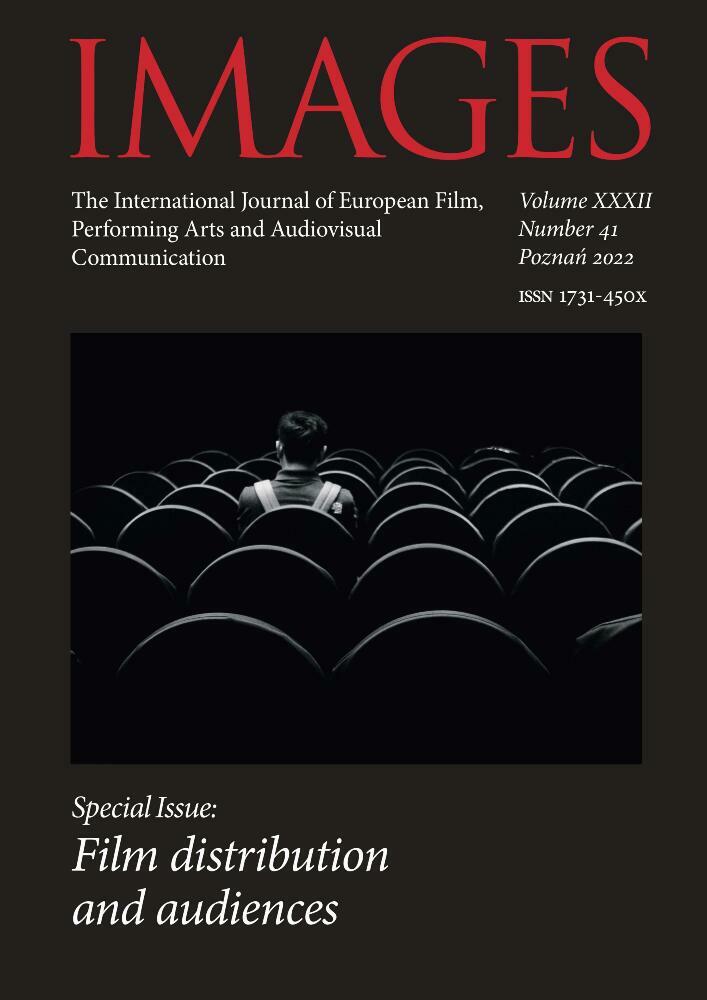Abstrakt
The production of silent gilms in Czechoslovakia ended shortly after the advent of sound technology at the very end of the 1920s. The number of available silent films steadily decreased from that point on, yet some cinemas decided to continue to include them in their programming, even though they had sound equipment. The article analyses the scheduling of silent films in the specific case of two cinemas from the periphery of Brno, the second-largest city in Czechoslovakia. On the exhibitors’ side, there was a visible tendency to screen films 1) approximately two years from the premiere and 2) older with renowned stars or plot. This surprising presence of silent films in cinemas leads to the question: “Why were they still scheduled”? The answer lies both in the cinema owners, for whom silent films were a cheaper commodity, and in the audiences, who did not necessarily demand screenings of new sound films.
Bibliografia
Allen R.C., Gomery D., Film History. Theory and practice, New York 1985 Anonymous, Beda Heller – Film ve znamení němých filmů, “Filmový kurýr” 1930, vol. 4, no. 35(29.8.), p. 1
Anonymous, Biopodniky FANTA od 25/12 1930, “Studio” 1930, vol. 2, no. 12, p. 288c Anonymous, Brněnská kina v číslech, “Filmový kurýr” 1933, vol. 7, no. 5(3.2.), p. 3
Anonymous, Bursa němých lmů. “Filmový kurýr” 1932, vol. 6, no. 12(17.3.), pp. 27–29
Anonymous, Bursa němých lmů. “Filmový kurýr” 1932, vol. 6, no. 13(25.3.), p. 4 Anonymous, Půjčovna němých lmů F. Čvančara, “Filmový kurýr” 1932, vol. 6, no. 12(17.3.), p. 2
Blažejovský J., Skopal P., Szczepanik P., Brněnská kina v souvislostech distribučních praktik a podmínek uvádění (do roku 1989), [in:] Filmové Brno. Dějiny lokální lmové kultury, eds. L. Česálková, P. Skopal, Prague 2017, pp. 23–53
Chytilová V., Diskurz o českých lmových hvězdách v českém lmovém tisku 20. let, Brno 2007 [Bachelor’s thesis]
Crisp C.G., The Classic French Cinema, 1930–1960. Bloomington – London 1991 Gomery D., e Coming of Sound: A History, New York – London 2005, <https://doi.org/10.4324/9780203997727>, accessed: 31.01.2022
Havelka J., Čs. Filmové hospodářství 1929–1934, Praha 1935 Havelka J., Čs. Filmové hospodářství 1935, Praha 1936 Havelka J., Kronika našeho filmu, Praha 1965
Hjort M., Small Nation, Global Cinema, Minneapolis 2005
Klimeš I., Kinematografie a stát v českých zemích 1895–1945, Prague 2016
Nedvědová M., Anny Ondráková: evropská kariéra začíná ve Vídni, Brno 2014 [Bachelor’s thesis]
Novák V., Historie brněnských kinematografů 1896–1981, (manuscript) Archiv města Brna, fond T68
Porubčanská T., Plátna medzi komínmi: význam návštevy kina v brnenskom robotníckom prostredí v druhej polovici 30. Rokov, [in:] Filmové Brno, eds. L. Česálková, P. Skopal, Prague 2017, pp. 273–292
Surová P., Sdružení premiérových biografů (1928–1938), Prague 2013 [diploma thesis]
Szczepanik P., Konzervy se slovy. Počátky zvukového filmu a česká mediální kultura 30. let, Brno 2009
Šťastná K., Švejk literární a lmový, Olomouc 2016 [Bachelor thesis]
Licencja
Prawa autorskie (c) 2023 Michal Večeřa

Utwór dostępny jest na licencji Creative Commons Uznanie autorstwa 4.0 Międzynarodowe.

